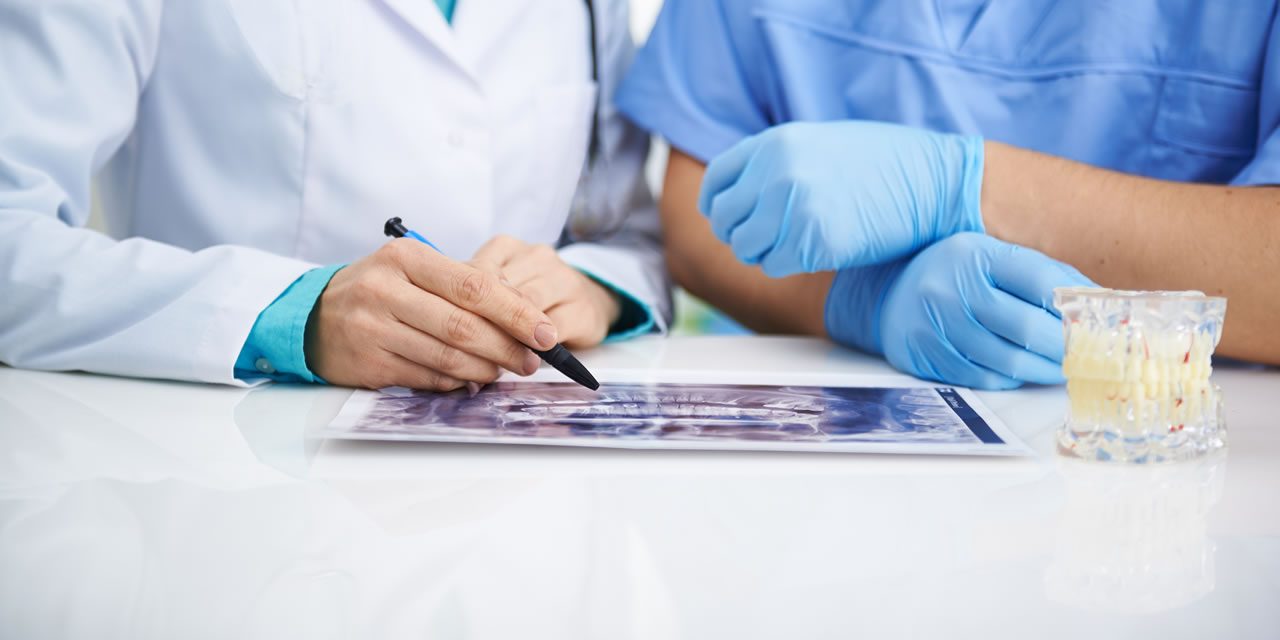
Digital and Analog X-Rays
Digital x-ray system that has a 90% reduction in the amount of radiation used versus traditional x-rays.
Dental x-rays (dental radiographs) are medical imaging tools your dentist uses to evaluate the health of your teeth and gums and diagnose problems. Using low levels of radiation, an x-ray captures images of the areas beyond the surface of your mouth and teeth.
Why and When X-Rays are Performed
Dental offices take x-rays of patient’s mouths to assess oral health and diagnose dental diseases or other issues. They can also be an essential part of a long-term treatment plan because they show small changes that can’t be seen at the surface level of the mouth.
Dental x-rays will be prescribed based on patient specific needs. Your dentist may recommend an increased frequency of x-rays if he or she is monitoring an ongoing issue or if you are having dental work performed.
The frequency of x-rays may also depend on factors such as your age, your dental history (such as if you have a history of cavities or gum disease), and whether you have ongoing symptoms associated with oral diseases. Children may receive more frequent x-rays since their teeth are in developmental stages and could require additional monitoring.
X-rays may also be taken in the case of dental emergencies, such as when teeth are infected, cracked, or otherwise damaged. They are essential in monitoring the development of unerupted teeth, such as wisdom teeth, for potential issues.
Find a Find a Dentist for Diagnostic Imagingv
Types of X-Rays
Different types of dental radiography systems are used in dental clinics for a variety of purposes.
Intraoral x-rays, which examine the teeth and gums in detail, are most commonly used in dentistry.
Extraoral x-rays show areas outside of the gums and teeth, such as the jawbone and surrounding areas of the face, head, and neck. These images are typically less detailed than intraoral images.
Bitewing x-rays are the most common type of x-ray used in dental offices. They are often used for interdental purposes (to check for cavities or other issues on the crowns or between the teeth). In a bitewing x-ray, your dentist will ask you to bite down on a piece of paper and will align the x-ray machine with one side of your jaw and mouth.
Occlusal x-rays capture all of your teeth in a single image and show the roof or floor of your mouth.
Panoramic x-rays look at the head, jaw, and mouth as a whole. The x-ray machine will rotate around your entire head.
Periapical x-rays take detailed images of two teeth from the roots to the crowns.
Digital Dental X-Rays versus Analog
Your dentist may use analog or digital radiography systems (or a combination of these systems) to take images of your mouth. Digital x-rays do not require development, so the images are available instantly. Meanwhile, analog x-ray systems are developed on x-ray film.
Most x-rays are taken in the same room where you have your dental hygiene appointment. However, some dental practices will have you step into another room where all of the x-ray equipment is stored.
Once you are settled in the dental chair, your dental hygienist or dentist will place a leaded apron or bib over your body and position the machine next to your mouth or head. For certain types of x-rays, you may need to be standing up to align your head with the machine. You will need to keep your head still to ensure that good image quality can be achieved.
Dental X-Ray FAQs
Who performs dental x-rays?
During your dental hygiene appointment, your dental hygienist will typically be the person taking the x-rays of your mouth. Once the developed or digital images are ready to view, your dentist will examine them, provide a diagnosis and identify any concerns. After this, the dentist will discuss treatment options.
How much radiation is used in dental x-rays?
X-ray technology requires a small amount of radiation exposure. The exposure levels are very low, especially for digital x-rays, and is an amount considered safe for adults and children. A lead bib and/or thyroid collar will be used to protect your organs from any minimal radiation exposure.
Women should always inform their dentist if they are pregnant. It may be recommended to put off taking x-rays until after the pregnancy, depending on the situation.
How long does it take?
Most dental x-rays can be completed within a few minutes. However, your dental clinic may need to take several images or several types of images at once. You won’t need to do anything to prepare except brush your teeth before your appointment, and there is no aftercare necessary for x-rays.
Find a Dentist Near You
The 123Dentist network includes dentists across Canada. Find a dentist near you to learn more about diagnostic techniques and to have your teeth checked.
